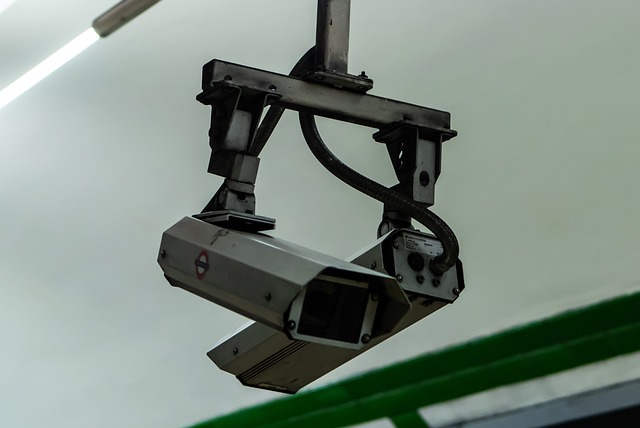Surveillance solutions have evolved, offering wired and wireless camera systems. Wired systems provide reliable, consistent quality but are complex and expensive for temporary setups. Wireless systems offer flexibility, ease of installation, and mobility, ideal for temporary or outdoor use, but may face interference issues. Hybrid systems combine these advantages, enhancing security with high-quality video and detailed monitoring. Future advancements include AI and 5G technology, promising smarter surveillance with faster data transfer rates and improved detection capabilities, revolutionizing security globally.
In today’s digital age, surveillance solutions have evolved significantly, offering both wireless and wired camera systems for enhanced security. This comprehensive guide delves into the intricacies of these technologies, highlighting their unique strengths and weaknesses. From flexibility and ease offered by wireless systems to the reliability and robust security features of wired cameras, we explore how integrating both can create a hybrid surveillance system that optimizes coverage and performance. Discover future trends shaping camera surveillance technology.
- Understanding Wireless and Wired Camera Systems: A Comprehensive Overview
- Benefits of Wireless Surveillance Solutions: Flexibility and Ease
- Advantages of Wired Camera Systems: Reliability and Security
- Integrating Both: Creating a Hybrid Surveillance System
- Future Trends in Camera Surveillance Technology
Understanding Wireless and Wired Camera Systems: A Comprehensive Overview

Surveillance solutions have evolved significantly, offering both wireless and wired camera systems as primary options for security and monitoring. Understanding the nuances between these two technologies is crucial when selecting an appropriate surveillance setup for any environment. Wired camera systems are traditional, relying on physical cables to transmit video signals from cameras to a recording device or monitor. This method provides stable and reliable connections, ensuring consistent video quality without interference. The setup process involves strategic placement of cameras and running cables through walls or ceilings, making it ideal for permanent installations where cost-effectiveness is not an immediate concern.
In contrast, wireless camera systems have gained popularity due to their flexibility and ease of installation. These systems utilize radio frequency (RF) or Wi-Fi technology to transmit video data wirelessly, eliminating the need for complex cable runs. Wireless cameras offer mobility and convenience, allowing users to position them freely without physical constraints. This makes them particularly suitable for temporary setups, outdoor applications, or situations where moving or reconfiguring surveillance is necessary. While wireless technology provides freedom, it may introduce potential issues with interference from other devices and signal strength limitations, requiring careful consideration of placement and additional accessories for optimal performance.
Benefits of Wireless Surveillance Solutions: Flexibility and Ease

Advantages of Wired Camera Systems: Reliability and Security

Wired camera systems offer several advantages over wireless options, particularly in terms of reliability and security, which are essential components of any comprehensive surveillance solution. One of the key benefits is the consistent and dependable connection they provide. Wired cameras are physically connected to a network, eliminating the potential for signal drop or interference that can plague wireless systems. This ensures that footage is captured and transmitted smoothly, without delays or disruptions, allowing for round-the-clock monitoring with minimal risks of video loss.
Moreover, security is significantly enhanced with wired setups. Since cameras are directly wired to a network, they benefit from the robust security measures in place, including encryption protocols and access controls. This makes it much harder for unauthorized individuals to gain access or manipulate the camera’s data, providing an extra layer of protection for sensitive areas. Wired systems also reduce the risk of hacking or signal jamming, making them ideal for critical surveillance needs where reliability and integrity are paramount.
Integrating Both: Creating a Hybrid Surveillance System

In today’s world, surveillance solutions have evolved to offer a blend of flexibility and enhanced security with hybrid camera systems. These innovative setups seamlessly integrate both wireless and wired camera technologies, providing users with the best of both worlds. Wireless cameras bring convenience, mobility, and easy setup, while wired systems ensure robust connectivity, high-quality video transmission, and reliable performance.
By combining these two approaches, businesses can create a comprehensive surveillance network. For instance, strategic placement of wireless cameras in public areas offers flexibility for quick repositioning and coverage of wide spaces, while a central hub connected to wired cameras provides detailed, continuous monitoring of sensitive zones. This hybrid approach ensures all-encompassing security, allowing for efficient management and real-time response to any potential issues.
Future Trends in Camera Surveillance Technology

The future of surveillance solutions is ripe with technological advancements that promise to transform camera systems. One prominent trend is the increasing integration of artificial intelligence (AI) and machine learning algorithms, enabling cameras to analyze and interpret footage in real-time. This not only enhances detection capabilities but also allows for more accurate and specific alerts, reducing false positives.
Additionally, 5G technology is poised to revolutionize wireless camera systems by providing faster data transfer rates and improved connectivity. This advancement will enable higher-resolution video streaming and more efficient data processing, making surveillance solutions even smarter and more responsive. As these trends continue to evolve, we can expect surveillance technology to become increasingly sophisticated, offering enhanced security and peace of mind for individuals and organizations alike.
In conclusion, both wireless and wired camera systems offer unique advantages as surveillance solutions. Wireless technologies provide flexibility and ease of installation, while wired systems ensure unparalleled reliability and robust security. Integrating these two approaches creates a hybrid surveillance system that leverages the strengths of each, offering optimal performance and enhanced security for various environments. As technology advances, future trends in camera surveillance will continue to revolutionize monitoring capabilities, ensuring safer and more efficient spaces.
